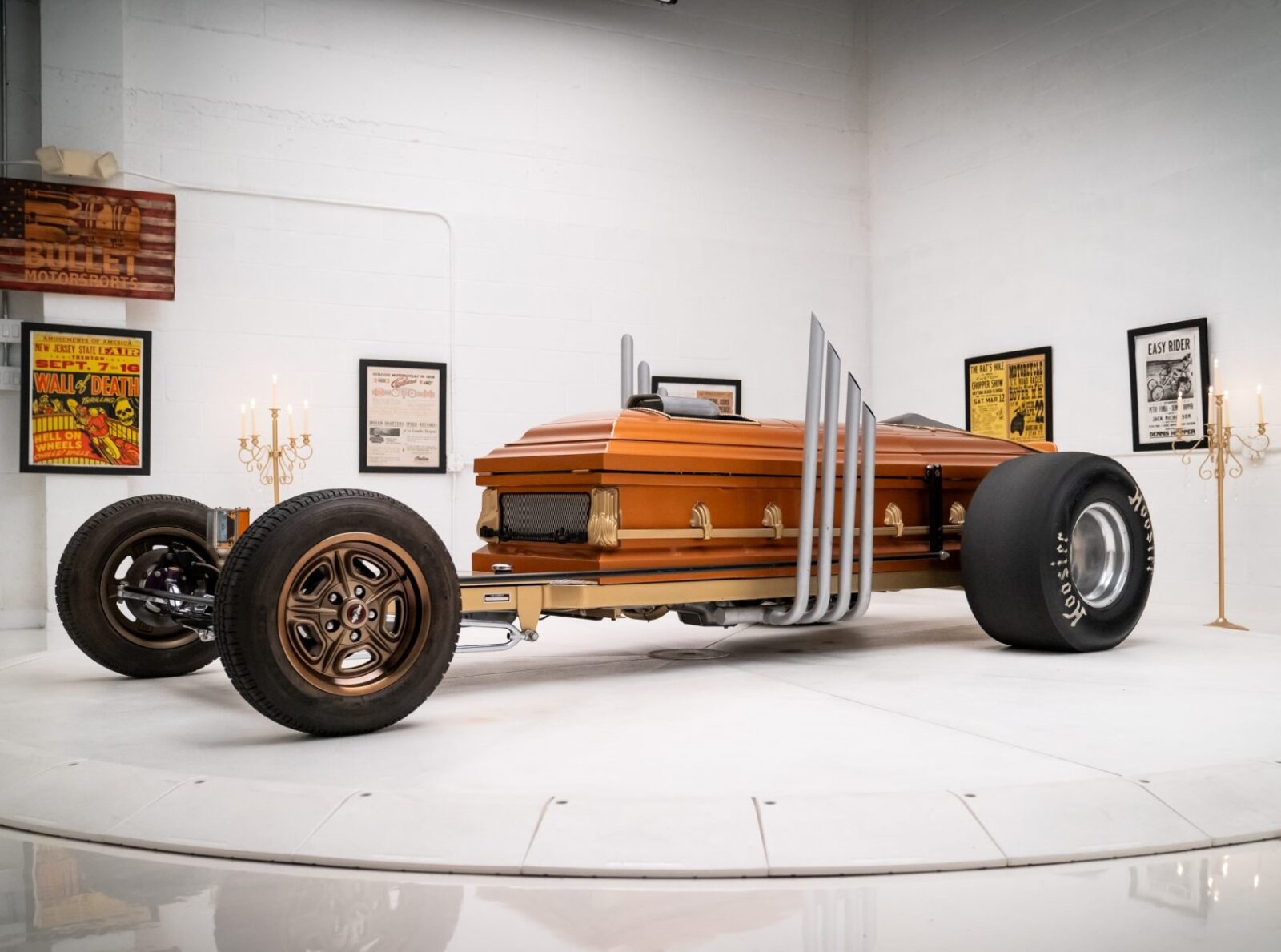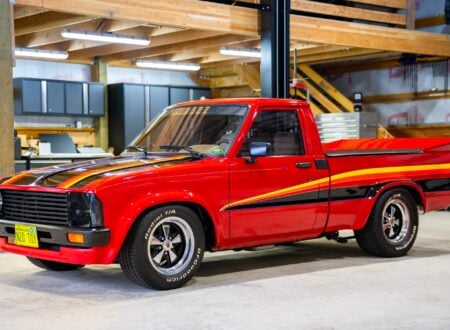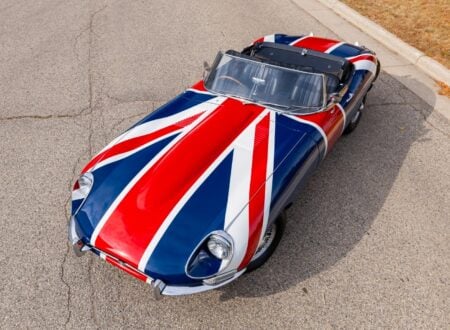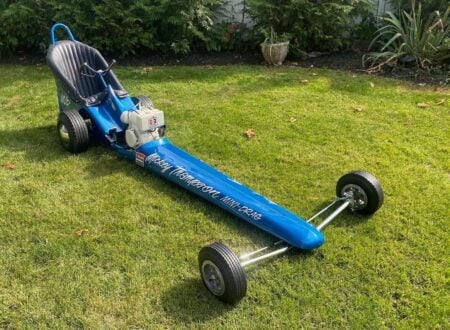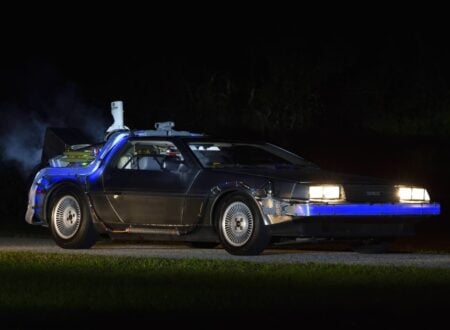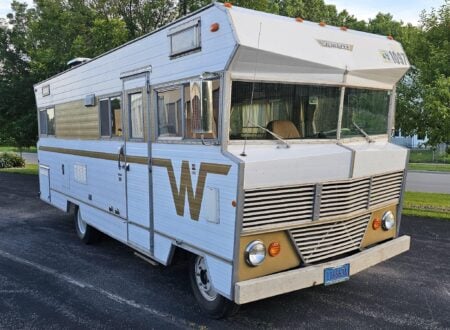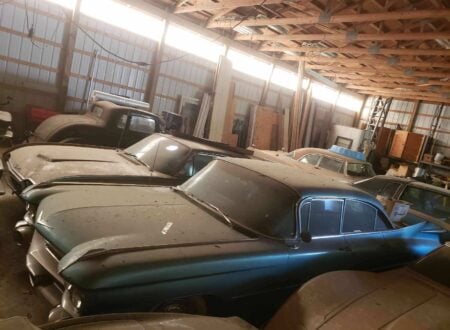This is the custom V8 “Casket Car,” and if you’ve ever been worried that your spouse will kill you if you buy another automobile, then this might be the best vehicle purchase you could make.
Many of you will remember the “Drag-U-La” coffin car featured in a popular 1965 episode of the TV series The Munsters. The Casket Car shown in this article was directly inspired by Grandpa Munster’s original, but it’s entirely unique and not a replica.
Fast Facts – The Casket Car
- The Casket Car was inspired by one of the most famous custom American TV cars of the 1960s, Grandpa Munster’s “Drag-U-La” coffin car. Drag-U-La was a fully functional car built with a real coffin and a Ford Mustang drivetrain by designer Tom Daniel while he was working for George Barris.
- The coffin used to build the original Drag-U-La needed to be sourced via a clandestine transaction, it was illegal to sell a coffin without a death certificate in California at the time. As a result, Richard “Korky” Korkes, Barris’s Project Engineer, managed to talk a funeral director into selling him one for cash, and it was left out back to be collected under the cover of nightfall.
- The car shown in this article was built much more recently, the project ran from 2008 to 2010, and it was made using a casket on a custom box-frame chassis with power provided by a small block Chevrolet V8 sending power to the rear wheels via a TH350 automatic transmission and a Ford 9” rear end.
- The Casket Car is now being offered for sale out of Lauderhill, Florida. It’s road legal and carries the New York registration plates “2 Die 4.” It comes with a collection of over 50 awards and trophies and it’s being sold by Bullet Motorsports Inc.
Hot Rod Herman And Drag-U-La
Drag-U-La was originally built to feature in the May 1965 episode of The Munsters titled Hot Rod Herman.
Above Video: This is a clip from “The Munsters” (episode 36, season 1) titled “Hot Rod Herman” shows the backstory behind the creation of the original Drag-U-La.
This episode was likely a way to attract drag racing fans to the show, drag racing in the United States was experiencing explosive growth at the time and many people spent their weekends down at the strip.
The premise of Hot Rod Herman was that Herman Munster, the Frankenstein character, had lost the Munster Koach (the family car) in a bet at the drag strip that went awry.
Grandpa Munster and Herman then spent the next week in the garage building Drag-U-La, so they could take it down to the drag strip and win back the Munster Koach.
In reality of course, the Drag-U-La vehicles that were built were made at Barris Kustom in California under the watchful eye of George Barris, undoubtedly the most famous movie car creator in history.
Both Drag-U-La and the Munster Coach were designed by Tom Daniel who worked with Barris at the time, Daniel would design over 80 cars over the course of his career, some full scale and some as scale models for Monogram.
The Casket Car Shown Here
The Casket Car you see in this article was built in Long Island, New York between 2008 and 2010 on a custom box-frame chassis. It has an 8′ fiberglass casket which acts as the body, and it offers seating for one in the rear, with the differential between the driver’s legs.
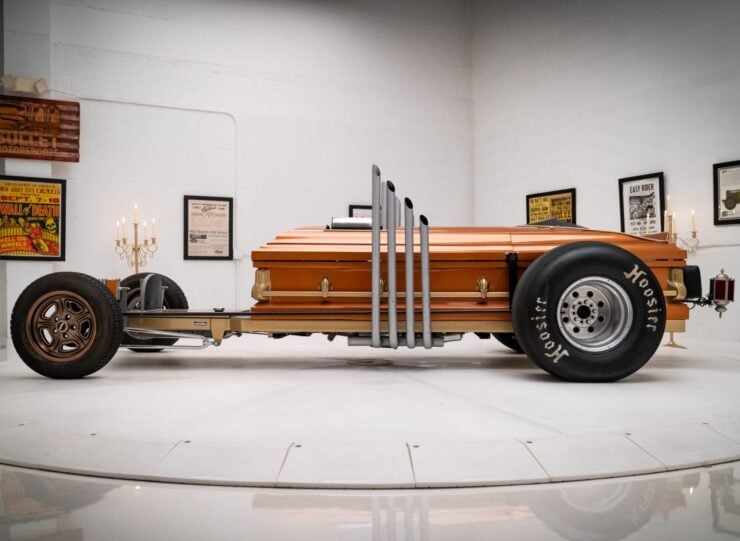

Power is provided by a front-mounted small block Chevrolet V8, and power is sent to the rear wheels via a TH350 automatic transmission and a Ford 9” rear end. Interestingly the fuel tank is mounted up in front of the engine, it consists of a flat tank that’s painted gold to match the color scheme of the rest of the vehicle.
There’s a tombstone at the very front which is bookended by two lantern-style headlights. There are matching lantern-style taillights out the back as well as a padded black bumper designed to look like a drag chute.
The car rides on a “big-and-little wheel” arrangement with 15” rear wheels fitted with 32.0/13.5 Hoosier drag racing slick tires, and 15” Race Star wheels up front shod with 165 width Widetrack radial tires.
Wilwood disc brakes are installed up front and paired with more traditional drums in the rear, and the car has a hydraulic proportioning valve between the front and back. The V8 sits under the forward part of the casket and the lid has been modified to act as a hood, opening forwards to show the engine.
The small block is topped with a four-barrel Holley carburetor and an Edelbrock intake manifold. It has finned valve covers, and the engine was reportedly serviced before the sale with fluids all changed and a carburetor adjustment.
The cockpit is rather snug, it’s in the rear of the casket and features blue wave-pattern velvet-style upholstery and a single seat on the center line of the car. The shifter is positioned to the driver’s right, there is a Momo steering yoke in the center, and the pedals are located to each side of the driveshaft.
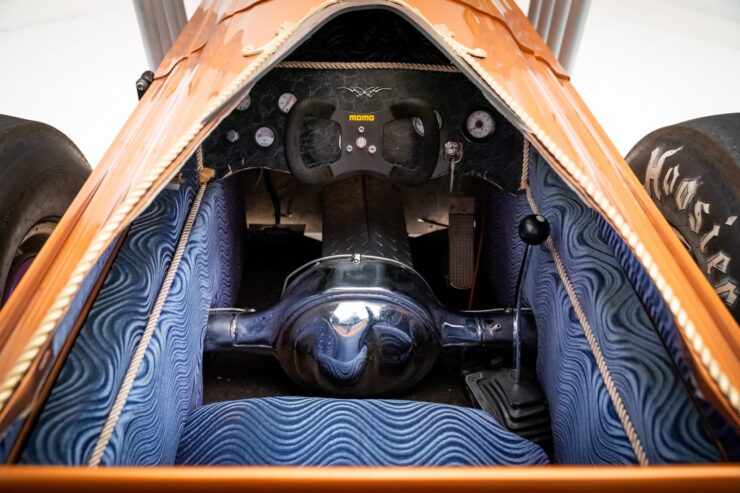

Amazingly, given the look of the car, it is actually street-legal and registered in New York as a 1928 Ford Pickup. The vehicle is now being sold and the owner is including the assortment of over 50 awards and trophies that it has won at various shows and events.
The car is now being offered by Bring a Trailer out of Lauderhill, Florida. If you’d like to read more about it or register to bid you can visit the listing here.
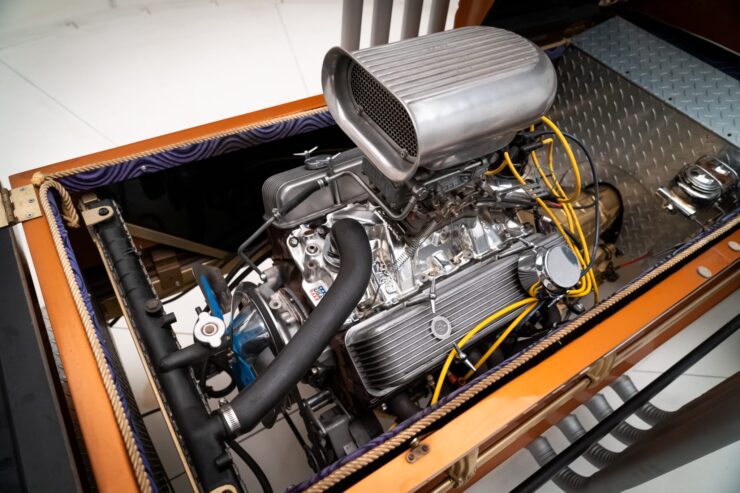
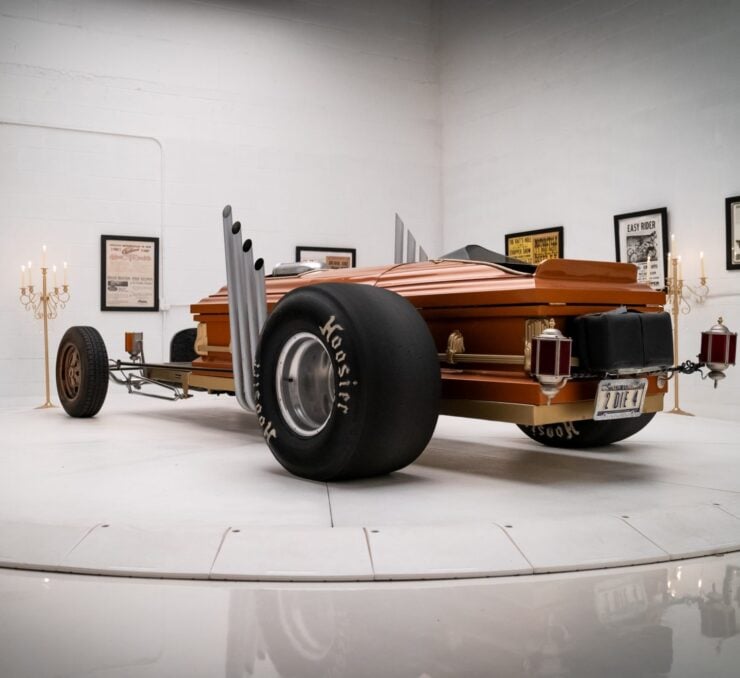
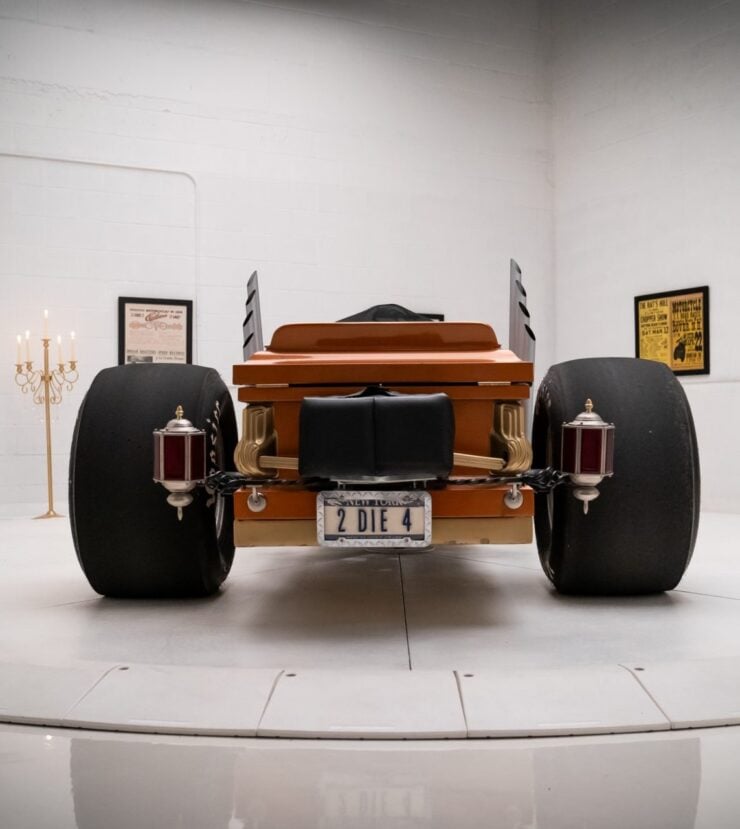
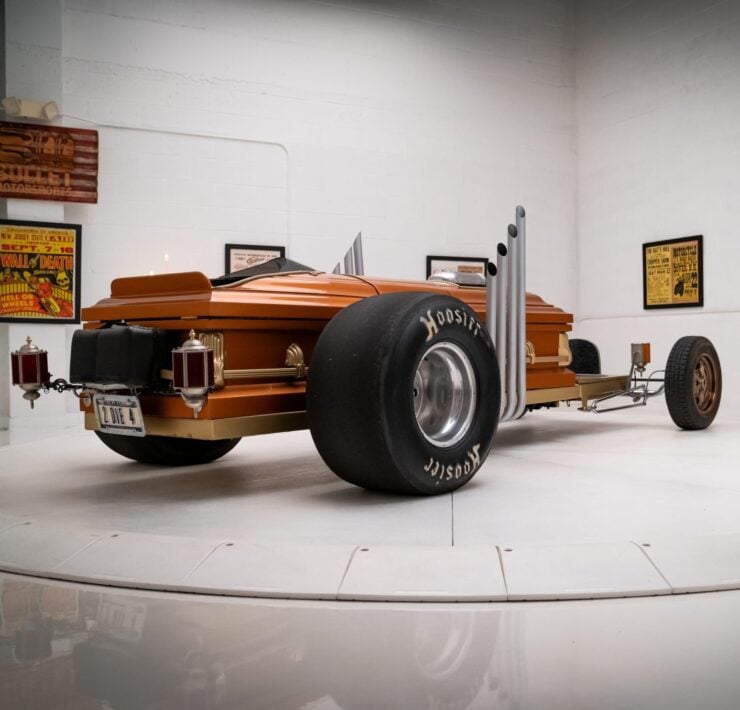
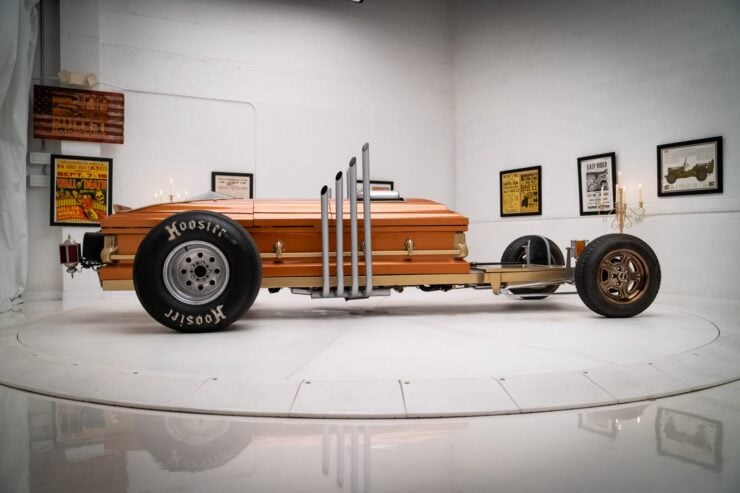
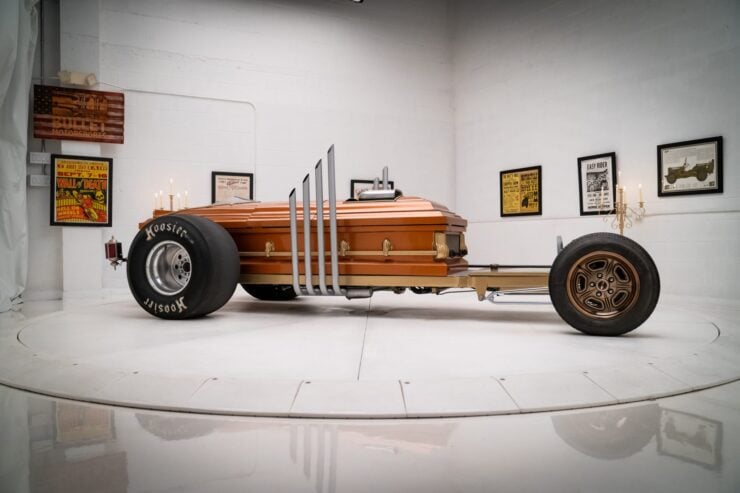
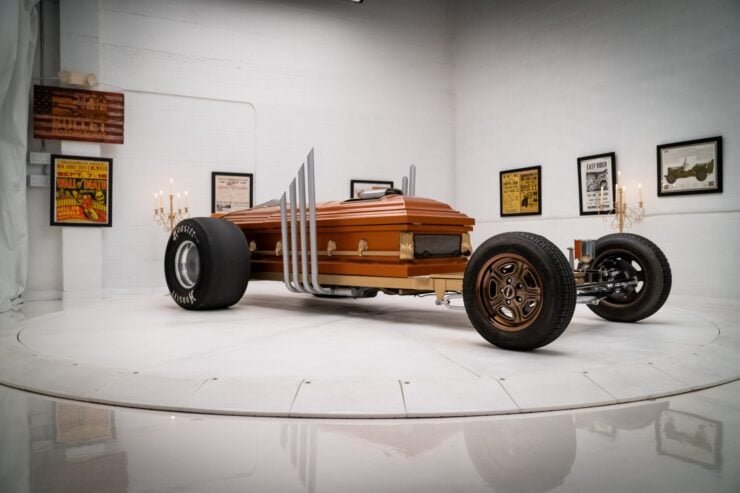
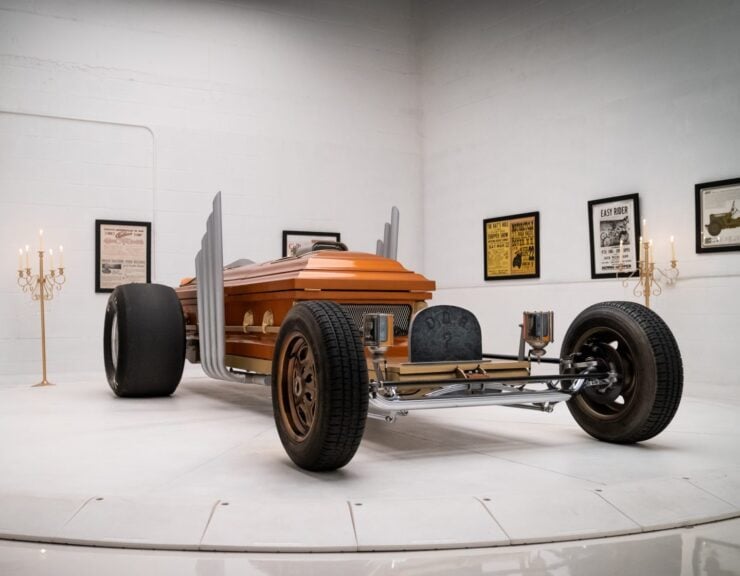
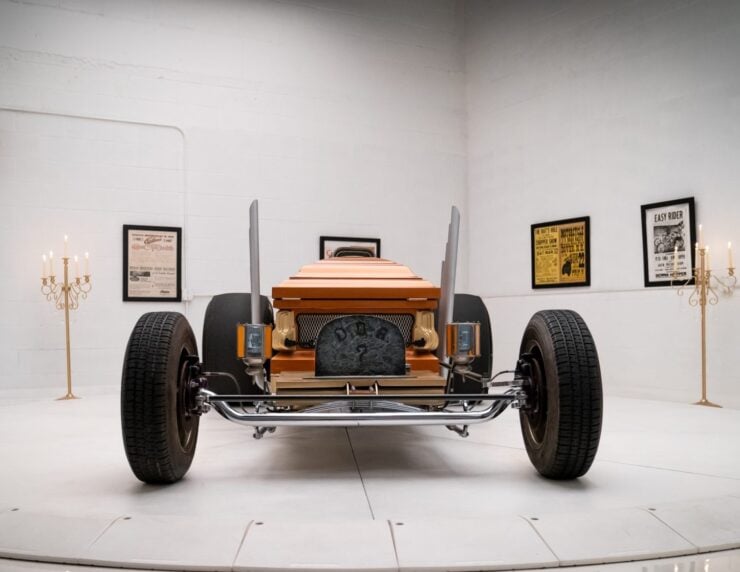
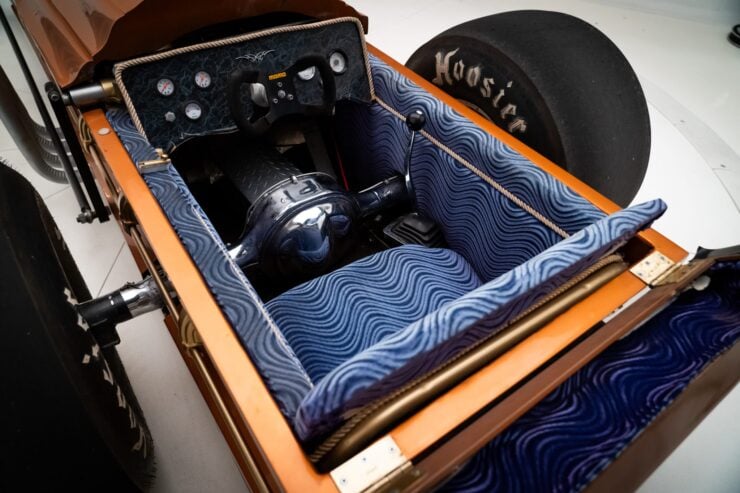
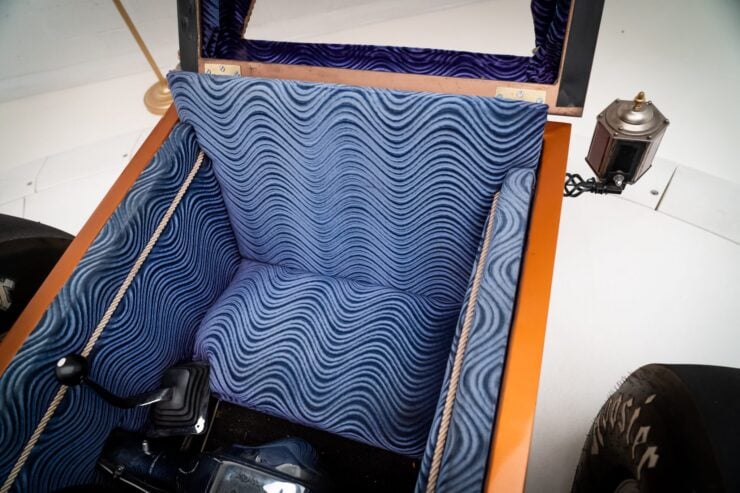
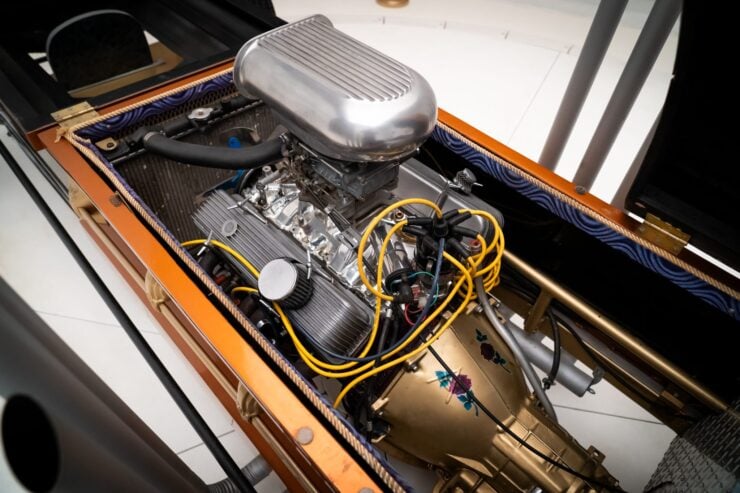
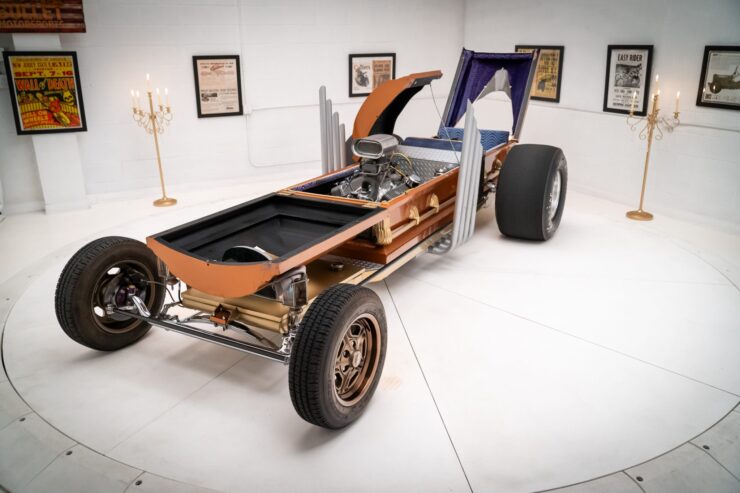
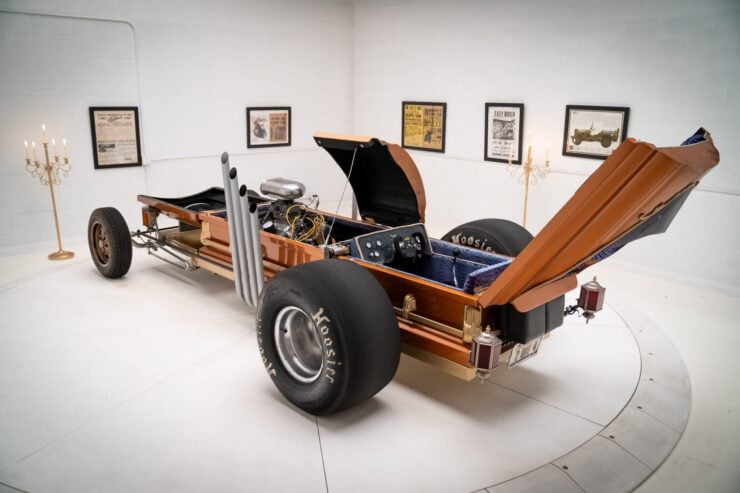
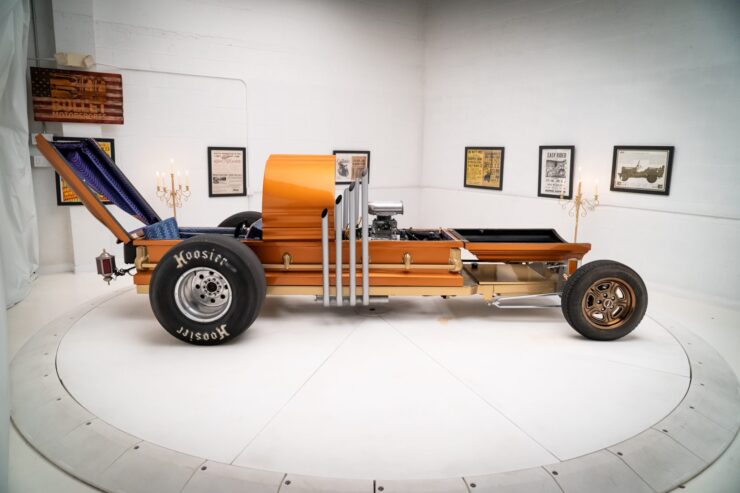
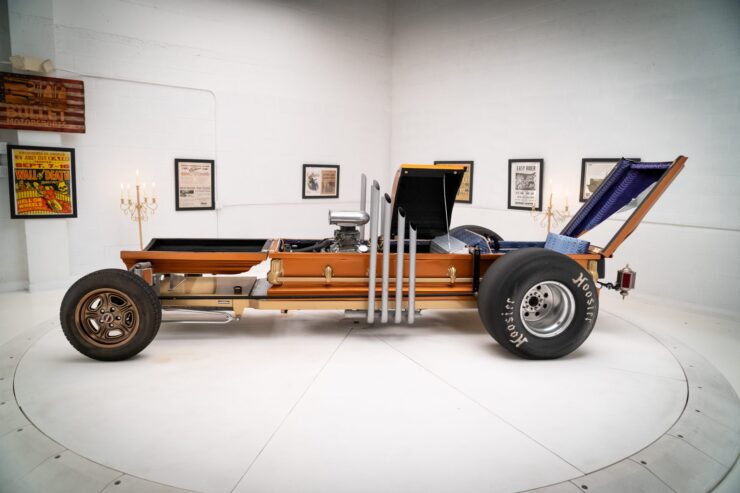
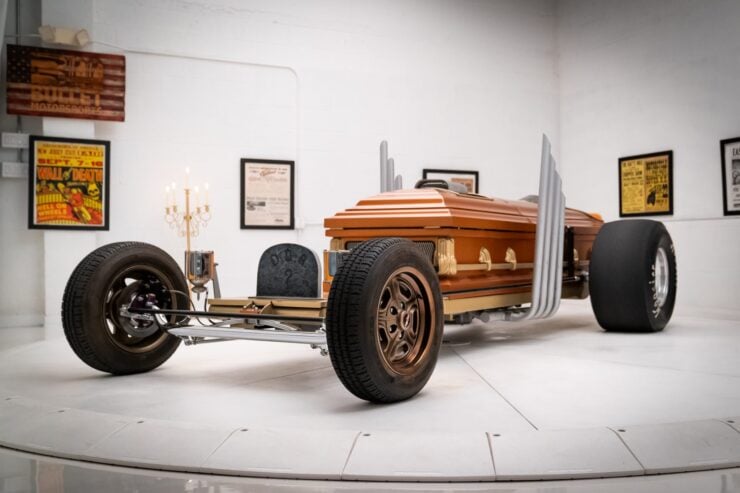
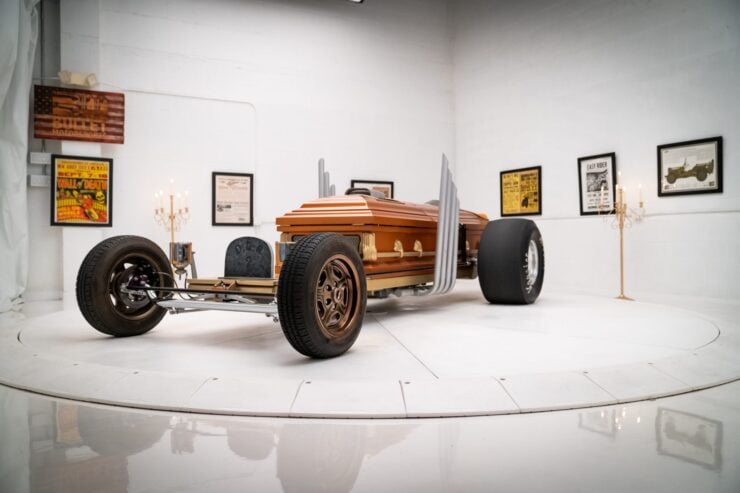
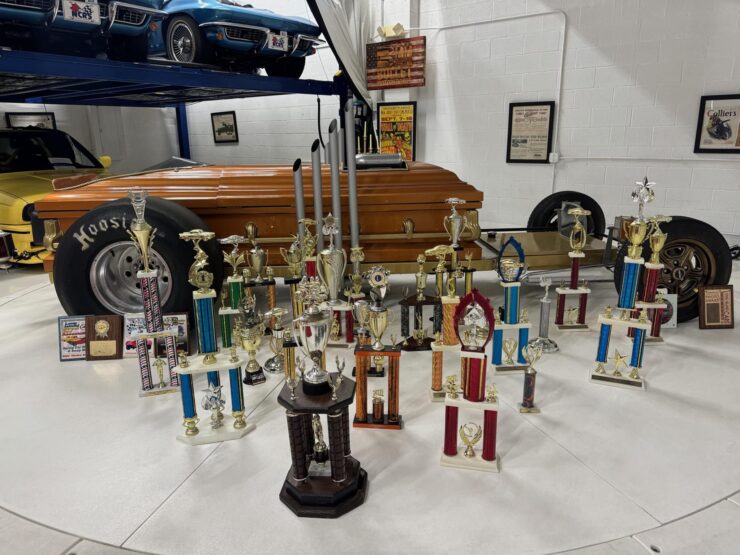
Images courtesy of Bring a Trailer

